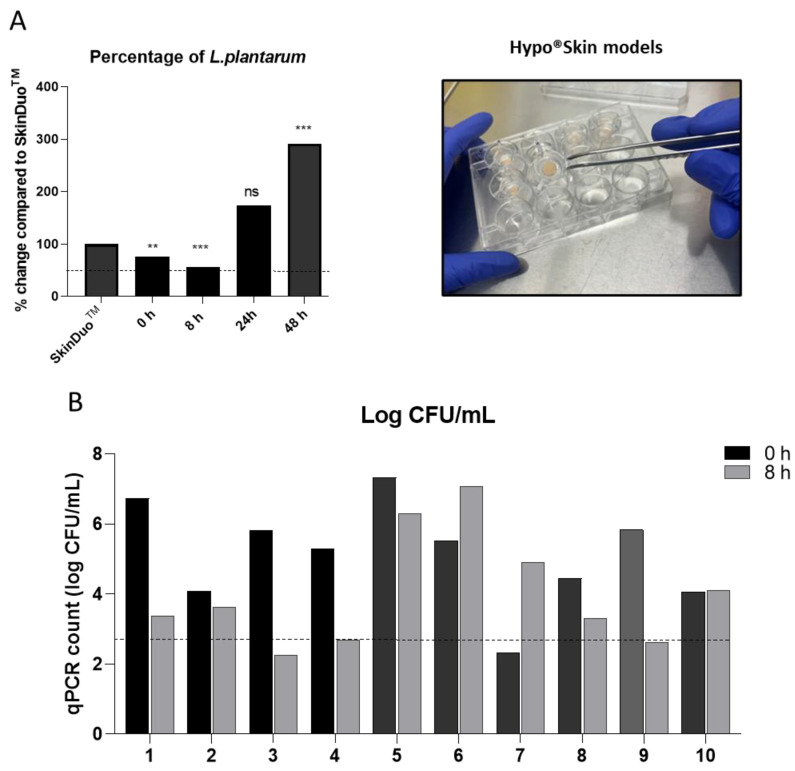Figure 2.
Viability of SkinDuoTM on the skin. (A) The serum SkinDuoTM was topically applied to skin biopsies (right picture) and tested for viability at times 0, 8 h, 24 h and 48 h, and compared as a percentage change to serum SkinDuoTM (left graph). CFU/mL was counted in technical triplicates. The mean for each time-point is presented. From time 8 h to time 48 h, there is a doubling increase of L. plantarum survival which increases steadily over time. This long-term viability increases the action of L. plantarum, without any damage on the skin. The experiment was repeated twice. For time 24 h, the repeated experiment resulted in an increased trend, ns p > 0.05 (Supplemental Data Table S2). Statistical comparison (CFU/mL): serum Vs. 0 h, 8 h, 24 h, 48 h; NS. p > 0.05; Unpaired t-test: 0.021 (**), 0.0002 (***). (B) Topical SkinDuoTM was applied on the skin of 10 healthy volunteers (fore-head and fore-arm) for 8 h. Skin swab samples were collected at time 0 (before application) and at 8 h after serum application. Swabs were processed after collection and viable counts were detected by qPCR. The observed value was calculated from a standard curve equation in qPCR and presented as log CFU/mL for the 10 subjects. The dashed line presents the 50% mean log CFU/mL derived from time 0 in all subjects. In 9/10 subjects, more than 50% mean was observed at time 8 h when compared to time 0.

